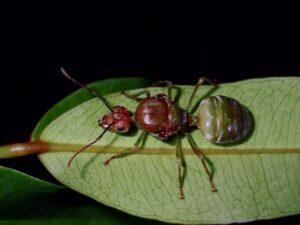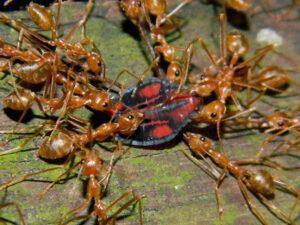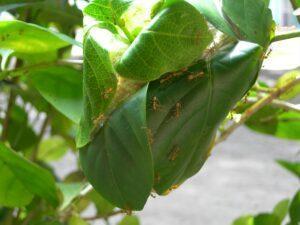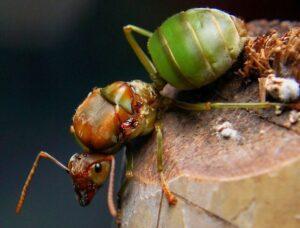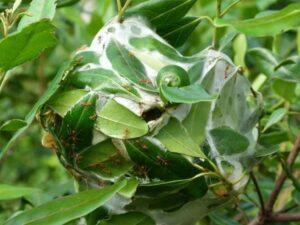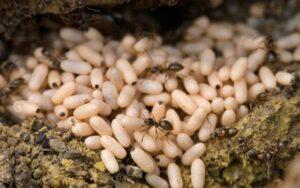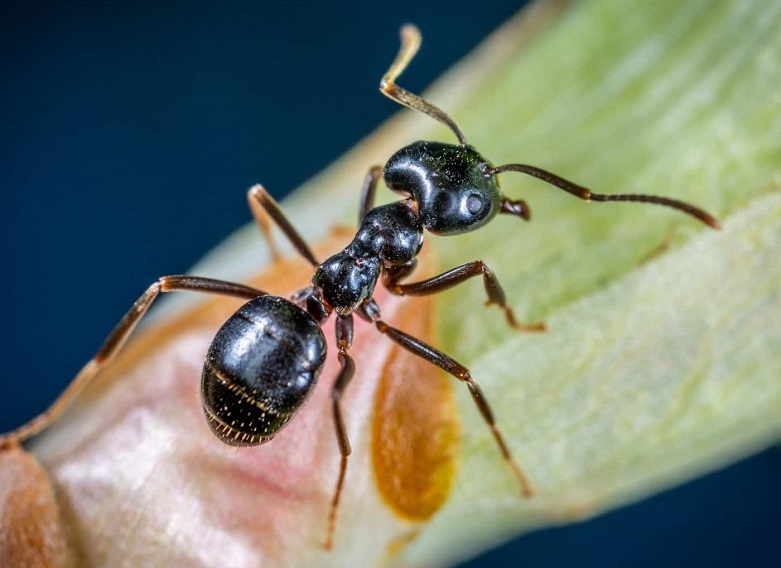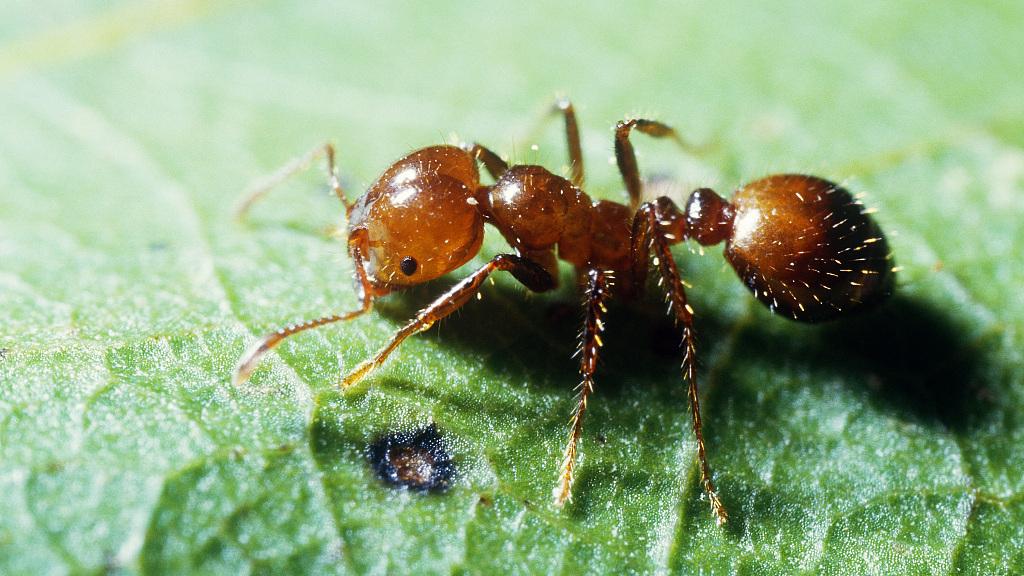Weaver Ant (Oecophylla)
Updated on
17/11/2022Weaver ants are the name given to the species of the Oecophylla genus. They get their name due to their nest-building behavior involving weaving silk leaves produced by the larva. The genus has two species at present. There were a total of 15 species in the past, of which 13 are currently extinct. The species of this genus are distributed throughout Asia and Australia.
Scientific Classification
- Class:Insecta
- Order:Lepidoptera
- Family:Formicidae
- Genus:Oecophylla
Conservation Status
Species Belonging to this Genus
- Asian Weaver Ant (Oecophylla smaragdina)
- Weaver Ant (Oecophylla longinoda)
Description
The color varies from one species to the other. E.g., the Asian weaver ant inhabiting Southeast Asia has a light or dark brown body. Specimens in Australia appear to have a bright green abdomen, often called green tree ants. The other species, Oecophylla longinoda, has an orangish-brown or dark-brown body. The major worker ants can measure around 10 mm (0.39 inches) in length.
The minor workers can be about 5 mm (0.19 inches) long, half the length of the major workers. The queens measure up to 25 mm (1 inch).
Distribution: Asia – Sri Lanka, and India; Australia – Broome town in Western Australia,Yeppoon town in Queensland,
Habitat: On trees
Do They Bite / Sting: Yes; they don’t have a functional sting, yet they deliver painful bites due to the chemicals their abdomen secrete; the bites cause pain and discomfort
Lifespan: A mature colony lives for about 8 years
Predators: Flies, caterpillars, bees, spiders
Behavior and Characteristics
Colonies
One or many mated females or queens establish the colony. The workers forming a significant part of the colony rear the brood of eggs that the queen lays. They also perform other jobs that involve constructing nests, foraging, and even aggressively defending their colony from external threats. Workers interact with other workers via chemical signals and tactile communication (like shaking their bodies). Workers often leave pheromone trails during foraging to help other workers track food sources.
Nest Building
They have an elaborate technique of building nests using living leaves. They pull the edges of the leaves using their mandibles when they survey the ones they can use to make their dwelling. The task may begin with a few ants, and the group size increases when other workers join.
If a single ant cannot reach the distance between the two leaves to join them, it is helped by other workers who form chains by holding each other onto their petiole or waist. When the leaf edges are drawn together, workers bring larvae from existing nests to the new nesting site with the help of their mandibles. They squeeze the larva gently so that it may produce silk.
Their nests are elliptical, varying in size. There may be small nests made of a single leaf or large ones built with many leaves. The time taken to make the nests depend on the size and type of the leaf used. However, workers build large nests in less than a day. The nests are water resistant, yet workers are constantly employed in replacing the old nests damaged by storms.
Life Cycle
1. Egg
The queen lays the eggs on a leaf and protects them. The workers take charge of nurturing the eggs.
2. Larva
The larvae are fed and protected by the mother weaver ant. They play a pivotal role in weaving nests built using the silk spun by them. These larvae possess special glands that help them produce silk.
3. Pupa
The weaver ant pupae, too, are under the care of the female and will remain that way until they mature to become mature workers.
4. Adult
The adults exhibit territorial behavior.
Importance to Humans
Since they forage and kill insects that may be potential predators of plants, these ants have been used in Southeast Asian and Chinese orchards as early as 400 AD for biological control. In Southeast Asia, many farmers practice weaver ant husbandry and take several initiatives to safeguard their colonies from predators.
Studies have shown the weaver ant’s role in controlling the mango weevil and other agricultural pests that could infest cashew, mango, and citrus orchards.
Besides their role in biological control, these ants are even used for human consumption since they are rich in fatty acids and protein. In countries like Northeastern Thailand, the larvae are priced twice more than the cost of good-quality beef. In Indonesia, the weaver ant’s larvae are commercially collected for feeding insect-eating birds.
Source
jungledragon.com, projectnoah.org, lucidcentral.org, redbubble.com, i.pinimg.com, goldenspoonawards.com




